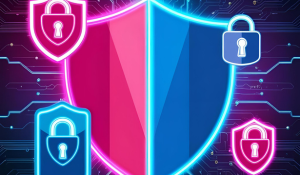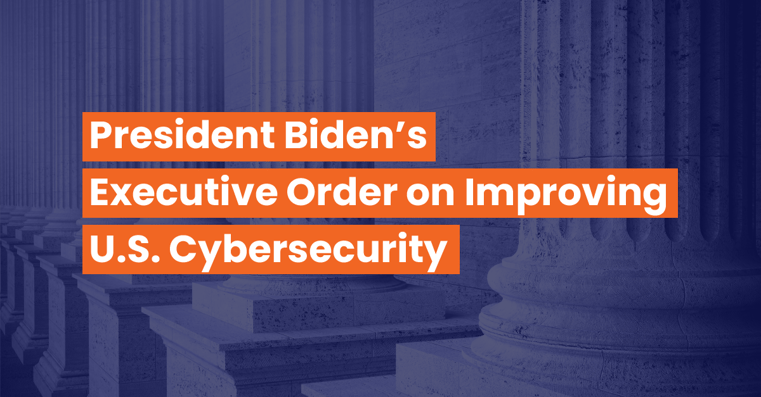Cyber threats continue to get more sophisticated and frequent, putting pressure on organizations to strengthen software security and fortify their applications against potential vulnerabilities. One approach that’s quickly becoming an industry standard is shift-left testing.
In this article, we’ll examine shift-left testing, its benefits for organizations, and the best way to implement it into the development process.
What is shift-left testing?
Shift-left testing follows the maxim “test early and often,” coined by Larry Smith in 2001. This proactive approach to security testing involves integrating security practices earlier in the development lifecycle, i.e., shifting them left in the project timeline.
By integrating testing into the initial stages of development, teams can detect and rectify defects early, reducing the likelihood of more costly and time-consuming issues arising later in the process.
Types of shift-left testing
.png?width=618&height=541&name=Copy%20of%20Heading%20(1).png)
1. Unit Testing
Unit testing focuses on verifying the functionality of individual units or components of software in isolation. Developers write test cases for specific functions, methods, or classes to ensure they perform as expected.
Unit tests typically cover small, discrete portions of code and are executed frequently during the development process. By isolating and testing individual units, developers can detect bugs early and ensure code reliability.
2. Integration Testing
Integration testing validates the interactions between different modules or components of a software system. Unlike unit testing, which tests individual units in isolation, integration testing focuses on testing the interfaces and interactions between these units. Integration tests verify that modules work together as intended and communicate correctly, detecting issues such as data flow errors or compatibility issues between components.
Integration testing can be performed at various levels, including module-to-module integration, subsystem integration, and system integration.
3. API Testing
API testing validates the functionality, reliability, performance, and security of application programming interfaces (APIs). APIs serve as the building blocks of modern software systems, enabling communication and data exchange between different software components.
API testing involves sending requests to API endpoints and verifying the responses against expected outcomes. Test cases may include checking for correct status codes, response payloads, error handling, and authentication mechanisms.
4. Contract Testing
Contract testing focuses on verifying the compatibility and compliance of services or microservices within a distributed system. In a microservices architecture, individual services communicate with each other through defined contracts, specifying the expected input, output, and behavior of each service.
Contract testing ensures that these contracts are honored by all participating services, detecting potential mismatches or regressions that may arise when changes are made to service interfaces.
5. UI Testing
UI testing validates the functionality and usability of software applications’ user interfaces (UIs). UI tests simulate user interactions with the application’s graphical interface, such as clicking buttons, entering text, or navigating menus, to ensure that the UI behaves as expected.
UI tests verify elements such as layout, responsiveness, and visual appearance across different devices and screen resolutions.
Shift-left testing benefits
Shift-left testing offers a host of benefits, including:
Early detection of vulnerabilities — The most obvious benefit of shift-left testing is that it enables developers to detect vulnerabilities early on. Early detection often means security flaws are addressed before they can create bigger issues, including security breaches in production environments.
Cost reduction — The cost of remediating vulnerabilities increases exponentially throughout the development lifecycle. Shift-left testing and early detection can significantly reduce the cost of addressing security issues post-deployment, making it a cost-effective strategy in the long run.
Improved collaboration — By “shifting left,” organizations can enhance collaboration between development, security, and operations teams because this practice creates a culture of shared responsibility for cybersecurity. Most notably, by involving security experts from the outset, developers gain valuable insights into emerging threats and best practices, helping to enhance an organization’s overall security posture.
Shorter time to market — Identifying and addressing issues early accelerates the development cycle, enabling organizations to deliver products (or new features) to market faster.
Better user experience — Shift-left testing ensures issues impacting user experience are identified and resolved before deployment, leading to higher levels of customer satisfaction.
Shift-left testing best practices
1. Involve testers as early as possible
Testing activities should start as early as possible within the development cycle. Testers should be included in the requirement-gathering phase for best results to ensure a comprehensive understanding of project scope, objectives, and user expectations. By aligning testing efforts with initial project planning, teams can identify potential issues and mitigate risks from the outset.
2. Encourage collaboration between team members
For shift-left testing to work effectively, there must be a close relationship between developers and testers (and other stakeholders, if applicable). Ways to foster this level of communication include
- Daily stand-ups
- Sprint planning sessions
- Regular check-ins and progress reviews
- Clear communication channels (particularly if your team is remote and face-to-face communication isn’t possible)
3. Automate testing processes
Utilize automation tools, like Finite State, to enable frequent testing at every stage of development. This ensures vulnerabilities are detected early, reducing regression issues and speeding up feedback cycles.
4. Promote a testing culture
Organizations with a security-first approach often do well implementing shift-left testing because team members already share responsibility for software security. Even if your team has dedicated QA professionals, developers should still actively participate in writing and executing tests alongside them.
It can also be helpful to promote the practice of test-driven development (TDD), where developers write test cases before writing the actual code. This practice leads to a more robust code because the desired behavior and expected outcomes are defined upfront.
5. Integrate Testing into CI/CD Pipelines
Embed testing into Continuous Integration/Continuous Deployment pipelines to trigger tests automatically with each code commit. This ensures that any issues are caught early in the development process and reduces the risk of integration issues.
6. Perform exploratory testing
Alongside automated testing efforts, carry out exploratory testing to uncover usability issues and edge cases from a user-centric perspective that might otherwise be beyond the scope of automated scripts. This complementary approach enhances overall test coverage and ensures a more comprehensive validation of software functionality.
7. Don’t overlook performance testing
Performance testing is a key aspect of effective shift-left testing and helps identify potential bottlenecks and scalability concerns. By evaluating application performance under simulated loads, teams can optimize system efficiency and ensure adherence to performance criteria. Early performance testing facilitates proactive optimization strategies, minimizing the risk of performance-related issues in production environments.
Tips for implementing shift-left testing
-
Define Testing Objectives: Clearly outline the goals and objectives of the testing process, including the types of tests to be conducted and the desired outcomes.
-
Automate Testing Processes: Utilize automation tools and frameworks to streamline testing processes and maximize efficiency.
-
Integrate Testing into Development Workflows: Integrate testing seamlessly into existing development workflows to ensure continuous feedback and iteration.
-
Establish Clear Communication Channels: Facilitate open communication between developers, testers, and other stakeholders to ensure alignment and transparency throughout the process.
-
Monitor and Iterate: Continuously monitor the effectiveness of Shift-Left Testing practices and iterate based on feedback and lessons learned.
How Finite State can help level up your testing processes
Finite State supports the Shift-Left philosophy that has become common in application security, but our unique, patented technology also enables AI-powered reduction of the application attack surface at run-time.
By providing full spectrum coverage, Finite State differentiates itself from competitors and optimizes the solution for different DevOps or DevSecOps models while maximizing developer productivity.
To learn more, talk to an expert today.
Subscribe to Our Blog
Get the latest posts delivered straight to your inbox weekly.
Share this
You May Also Like
These Related Stories

The Real Cost of Immature Product Security Programs

If you think your software is secure, get ready to prove it.



